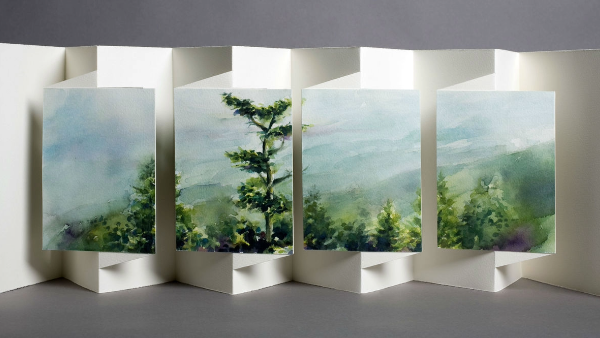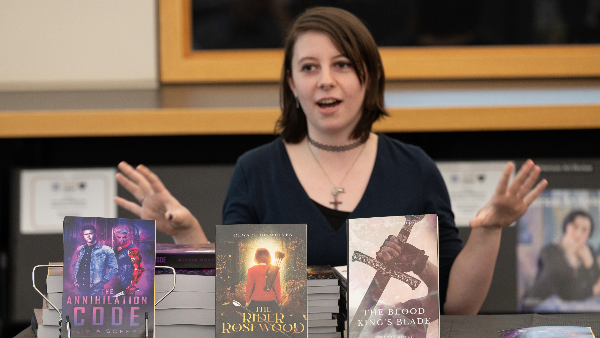Nature has always been a source of inspiration for Valerie Carrigan’s artwork. Over time, Carrigan found herself committed to protecting and preserving the natural world through the art of printmaking and book arts. After earning degrees in art education and fine arts, she built up her bodies of work and itched to get her pieces out of the studio and into the hands of others. The only obstacle was figuring out how.
“When I was in college, I was never once offered a class in the business of art,” says Carrigan, MFA, an assistant professor of studio art in the College of Arts and Sciences’ History, Literature, and the Arts department. “I think this does a disservice to emerging artists because they graduate from college and don't know how to pursue a career in the arts where they can also make a living.”
Looking to launch her career after grad school, Carrigan taught herself how to build a website, market and sell work, and apply for grants and fellowships. She notes that having this information upon graduation could have helped her kick-start her artistic career much earlier and have a better balance of practicing business and art.

Today, Carrigan works out of a Massachusetts-based historic mill where she creates and sells her work. She also exhibits at galleries and museums across the country and will showcase her work in February at the CODEX Foundation’s International Biennial Book Art Fair and Symposium in Oakland, California. Carrigan is currently teaching courses in Bryant’s new Arts and Creative Industries major. Through this program, students develop a business plan, participate in arts-related internships, learn to design their own websites, discover how they can market their work via social media, navigate how to apply for art grants and residencies, and more.
“To have a successful career as a visual artist, creative writer, or performing artist, we need to understand how business is connected to our passion for the arts,” she says.
Carrigan stresses the importance of building community by networking with those in the creative industries during conferences, residencies, or by reaching out online. Connecting with other artists facilitates a supportive environment for individuals and can lead to new and surprising opportunities.
“Students often don't realize the incredible range of opportunities in the creative industries,” Carrigan says. “You don’t need to be a painter or an actor to work in the arts. Instead, you might become a mobile app designer, a freelance sportswriter, or a museum educator. Statistics show that the creative economy is booming. The life of an artist has ups and downs just like any career, but perseverance is key because there's nothing as rewarding as having a career you are passionate about.”
Students like Olivia Soffey ’26 are already making strides in their creative careers. Soffey, a Literary and Cultural Studies major with minors in Marketing and Arts and Creative Industries, has been writing and self-publishing books since age 16. She released her third book, The Annihilation Code, this year and is currently writing her fourth.
“I'm a storyteller at heart, and it's something I've always been passionate about. If I could write full-time, that would be my dream job,” says Soffey, who’s involved with the Bryant Literary Review and Creative Writing Club.

Soffey’s storytelling began at age six and highlighted adventures of talking dogs and cats — all inspired by The Buddies, a spin-off of Disney’s Air Bud series. Moving into her teenage years, she enjoyed young adult fantasy, and her writing soon followed that direction.
Soffey navigated the self-publishing world with the help of her parents and YouTube tutorials before settling on using Amazon Publishing. Her books are currently sold through Amazon, though people can purchase signed copies by DMing her on Instagram.
“Business isn't something that came naturally to me because I really am an artist at heart, but I have learned a lot about how to market books and have a good elevator pitch,” Soffey says.
While books are full of surprises, Soffey’s creative journey has also revealed its own unexpected plot twists.
“The amount of business involved in art surprised me,” Soffey says. “Society often frames art and business as two oppositional things, but creative industries are industries and there's a huge business component to that. If you want to make money, you have to know the business side of it.”